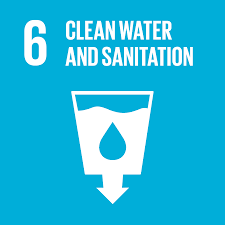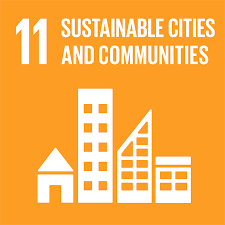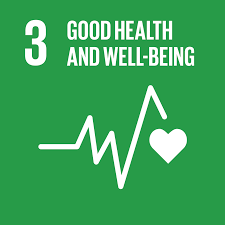When The Taps Run Dry...
- Nahom

- Dec 5, 2020
- 11 min read
This article is focused on the following UN Sustainable Development Goals:
A kilometer or two off the Addis Ababa Airport, Ethiopia, Asfaw Seyoum kills the switch of a Black Toyota Surf. It was a cold day in January. A strong wind cuts through the partially opened window right to the bald head of Seyoum as he lightly skims through a new copy of Kurt Vonnegut’s Slaughterhouse-Five. It was around 4:00 am, deep into the night when he finally gets out of the car and scrambles to find his flashlight in the dashboard cabin. When he spots the redback end of the flashlight, he lowers his radio and prays as he approaches the tap, it was his eighth try, he wanted to sleep dearly. He turns it on to find a thin strand of water flowing from the tap. He happily gets the jerry cans and goes off to work. It was a reason to celebrate.
Ethiopia is home to nine rivers and twelve large lakes and of which three rivers flow through Addis Ababa. Accordingly, a study made by the government claims that Addis Ababa has a 97% water coverage. Nonetheless, that is not the case. Addis Ababa residents are currently battling it out to survive without clean water for days.

As a study made by the Ethiopian Business Review indicates, “Ethiopia has 12 river basins with an annual runoff volume of 122 billion meter cube of water and an estimated six point five billion meter cube of groundwater potential. However, only about three percent of water resources are used for drinking water supply in the country.
RESIDENTS IN THE SPOTLIGHT
Having lived in her house for 16 years now, Meseret Habte has seen the tap water change throughout.
“Eight years ago, I used to get tap water daily,” Habte said. “Nonetheless, that has changed and getting water for 3 days straight is something to be happy about.”
Habte says that the water is inconsistent. She stated she could not figure out when it comes. Hence, most of the time, the water comes without their attention and they have to wait until the next time it appears.
“After a few days,” Habte said. “We will wait for it at whatever cost, even our sleep.”
Similarly, Asfaw Seyoum of Gerji Mebrathail believes in no pattern. “It is erratic,” he said. “I couldn’t figure out a pattern. There are days you expect, but the exceptions are many.”
“Sometimes we are not sure if water comes in the deep night when we are fast asleep so we set our alarm and we raise,” Seyoum added. “However, it is a gamble, you either win or you don’t.”
Henok Masresha, the lead supervisor in the water Addis Ababa Water and Sewerage Authority has an ambitious outlook about the objectives of the government. “Our ultimate goal is to get clean water to as many people as we possibly could,” he said, “given that the water production and population growth is not proportional, we are forced to provide water through shifts.”

The shifts had some problems with residents. As many people want it during the daytime, the complaints have increased dramatically. “We had complaints about the shifts,” Henok added. “Residents provide feedback and most of the time, people ask for their shift times to be changed and we try our best but you can’t do that for everyone.’’ People had some serious issues with water. Nonetheless, they never complain. They believe it is pointless to do so as they have tried and failed multiple times. Rahel Semagn, a resident in the province of Weregenu has experienced horrendous water conditions. She has spent the last few years of her life with access to water once a week or even once every two weeks. “It is really bad,” she said.
“We have two people at our house and we have to buy 20 litres of tap water for 5 birr and that is for every three days. That would be 50 birr per month. As a nanny and a cleaner, that is more than I can afford.”
Tigist Habte, living in Lafto has seen the effect of construction on their tap water system. “It is common,” Tigist said. “During times of construction, we have to travel twenty minutes to get tap water as we are certain that our tap will not provide water for as long as the construction is done or at the very least until the damaged pipes are buried again.”
Linda Erz, a student at the International Community School of Ababa has another perspective to the issue. She and her family do not get water and she mentioned they are prepared for it.
“We have this huge storage that fills up whenever water comes so that we don’t have to worry about having enough water,” commented Erz.
“Nonetheless,” said Erz.“The recurrent power outages affects our water storage. Without electricity, we can’t pump out the water from the storage and we have to progress until either the water or the power comes back.”
Seyoum believes it is a double effect. He believes the problem arises from not only the inconsistent shifts but also from the insufficient pressure when the water is available.
“We hardly get any water,” Seyoum said. “Even when we get the water, the pressure is not strong enough to reach our showers and that is why we stick to our jerry cans. Investing in a storage on the top of our house will not be profitable as it will never be of great use.”
Erz also has a similar opinion on the pressure of the water, “Compared to Germany, it is really weak,” she said. “That is because that is what me and my family know. However, you kind of learn how to work with it and it will not be obvious until you go to a different country.”
REASONS FOR SHORTAGES
According to the Addis Ababa Water Sewerage Authority, Ethiopia is a relatively water-rich country. Its underground water reserves and the flow of its rivers (80% of the flow of the Nile comes from its Ethiopian section) are enough to supply drinking water to its 92 million inhabitants. It is the lack of material and human resources to build infrastructures that is responsible for the water shortages within the city.
Nonetheless, residents and some experts have other assumptions.
Erz attributes the water shortages to power outages and the infrastructural development of their province Bole Bulbula.
“Because our community is still developing, that greatly affects it I think and also, our water comes from a borehole,” Erz said. “We need electricity to pump that up and given our electricity situation, the water doesn’t come as much.”
Daniel Clark, a water researcher working at an Ethiopian branch of the International Development Enterprises believes it is a governance issue. He commented that the problem lies in the funding given to the water section of Ethiopia.
“It leads to this vicious cycle,” Clarks said. “Because people hoard water when it is available which creates more demand on systems which makes it more likely that the system overall will run out of water and has to shut off."
Nathan Haines, a teacher at the International Community School of Addis Ababa believes there are two major reasons for the water shortages.
“Water scarcity in Addis stems from a number of different things,” he said. “The first one is that the dry season is long and the rainy season is short that the reservoirs will get low. As surface runoff comes from the Entoto Ridge and if there is a limited amount of water runoff because of the limited amount of rain, the reservoirs decrease in amount.”
Haines believes the second problem stems from infrastructural damage of the pipes and not getting repaired resulting in wastage of water.
Masresha believes the water shortages are there due to the low water pricing system.
"The water is actually priced for much less than what is required to get it to homes," he said. “I think that is partly the Ethiopian government practice being a socialist economic policy thereby seeing water as an essential product for life but also for economic development.”
The pricing alone was not much of a big deal to Masresha. He believes the problem with the low pricing is that people tend to waste the water. This stresses the already limited water supply creating additional scarcities across the city.
However, residents (that don’t work closely with water) provide an interesting insight to what the general public believes as in Tigist Habte commenting, “The shortages are due to the city getting bigger and population increase and increase in condominiums.”

Seyoum, on the other hand, associates the water problems to the population distribution.
“Addis Ababa is a hub, 8-10 ten years back all the development was in the centre of Addis but now,’’ he said. “Community buildings, condominiums and residential occupations are distributed around the outskirts too making it difficult to build the infrastructure along with the settlement of the population.”
Clark believes that the water shortage has a relationship with house structures.
“If there are practices that are unplanned housing, people building without proper foundation,” commented Clark. “Not only will have issues about the buildings not being strong enough, you also have problems with basic things such as no power, sewerage and most importantly, water. Once homes go up, it is quite hard not to destroy peoples’ houses with water.”
STARTS OUT CLEAN
The cleanliness of water in Addis Ababa has been creating quite a controversy in Addis Ababa. The government believes that the water they provide is upto the WHO standards and that has been proven to be true. Nonetheless, residents have been complaining and the government has been responding by saying that the water they provide is clean. Surely, each one of them have their own truth. Hence, there must be a pollution influx somewhere down the process.
“I believe we use underground water,” said Tigist Habte. “But we never use it for drinking as we occasionally find silt leaking in from constructions, pipeways of wastewater mixing up with the water stream and certain odors in the water.”
Habte and Semagn agree with Tigist Habte’s opinion and the problems become more evident as Seyoum goes on to say, “We used to consume the tap water a few years back, but now the exceptions with pollution are too many that we could not gamble with our health anymore.”
Haines appears to have an answer to where the problem lies.
“The water in the Addis water system is potable. Even the WHO recognizes that it is treated on the reservoirs, it is treated at the wells,” he commented. “However, because the infrastructure is poor, pipes are old, pipes break and other causes, the water that comes out of your tap is not consistently clean and certainly could lead to stomach issues.”

As for Clark, the problems arise due to the fact that the water is gone for most of the time and the lack of sufficient pressure in those pipes.
“You clean the water at the treatment plant and the reservoir,” Clark said. “It may be clean when it starts going into those pipes but if you had times when the system is down, those pipes are not totally waterproof and what you want is a little bit of water leaking out, not stuff leaking in and that leads to serious problems. The problem is further aggravated when you have open defecation, dumping in the city as all of that contamination can get into the water systems.”
BOTTLED WATER
As a solution to the inconsistent cleanliness of the water from the taps, many residents interviewed have dwelt upon using bottled water as potable water.
“We don’t trust the tap,” said Habte.“ We buy twenty litres of bottled water every three days as we have 5 people in our family and that is for 50 birr per twenty litres which adds up to 500 birr per month.”
“I wouldn’t say that is cheap,” Habte added. “It is not expensive either. It is just in the middle you know. It is a necessity you have to invest in.”
While Seyoum and Tigist choose to take a similar approach of buying bottled water, Semagn does something different.
“I can’t afford to buy 20 litres of tap water and another 20 litres of drinking water,” said Semagn. “It is just that, I can’t do that with my economy. Instead, I have invested on a sand filter that purifies all the mud and unwanted stuff from the water. It is not perfect but you got to live with what you have.”
Nonetheless, Mr. Haines and Clark have different perspectives to bottled water.
“Environmentally speaking, the plastic water bottle phenomena is a scourge, it is destroying our planet and we have to do something about it,” commented Haines.
“Part of it is about better plastic recycling.” Haines said. However, in Ethiopia, they produce the plastic from scratch as it is easier to produce new plastic than it is to buy from the recyclers.”

“One of the biggest things that has happened from a market standpoint and is interesting to see is that there used to be 3 or 4 bottled water companies,” said Clark. “As of this year, they went up to 20 different companies making the variety of the suppliers quite many. Hence, access to bottled water is not an issue.”
“What is an issue is what that causes in terms of waste and the cost of buying that bottled water,” Clark said. “The problem arises from bottles ranging from 250 ml to 2 litres that are made from single use plastics that eventually accumulate and will go into landfills, and never decompose.”
Given that most people depend on bottled water for drinking, the amount of plastic and pollution is humungous.
POTENTIAL SOLUTIONS
“There are ways,” said Haines. “But they require double efforts, from both the government and the people. From the governments’ perspective, it is going to involve investment in infrastructure, dredging the reservoirs, digging more wells and building additional reservoirs, laying down more pipes etc.”
“There is certainly not a reason for people to just give up and also not a point”
“Prices of water should be increased,” commented Mr. Haines. “That should be done in a tear way and many countries do that. People that are wealthier, people with bigger houses and use more water pay more while people that are poor and don’t use as much water don’t have to pay as much. That would force us to use our water more efficiently and the government would recoup more cost to invest in infrastructure.”
“As for the residents,” Haines added. “I think it is partly making sure you don’t have leaks and also reusing water. Using gray water rather than using fresh water from the hose, watering your garden from the water you used to wash your dishes and water from your washing machine. It is about removing those things that are not necessary like washing your car every day, spending ages in the shower and all sorts of life decisions.”
“I think it all has to do with the design period,” said Masresha. “That is how we predict by how much the population will change and how much water we need to serve those people. Those predictions did not work as Ethiopia’s population has doubled our predicted increase. Hence, on our part, we have plans to update those design periods and work accordingly.

“All in all, the city of Addis Ababa has a much better situation than it used to have in many respects and there is definitely hope to be had out there,” said Clark. “Even though you can’t sit there and say it is adequate now, there is certainly not a reason for people to just give up and also not a point because if we give up, things will definitely get worse.”
Going back, to Gerji Mebrat Hail, Asfaw Seyoum goes back 8 years in time when their resident was full of large trees, the roads were bumpy and car empty. He remembers finding the tap open, the jerry can overflowing. He ignores it and enters his car, the engine roars and he leaves the house, never thinking back. “I regret it,” said Seyoum. “I wish I could go back and fix what I have messed up. I wish I had been careful and yet, I have learnt so much about water. Hence, I still have hope, things could go back to where they were once again.”
Remember, change starts with you.







Comments